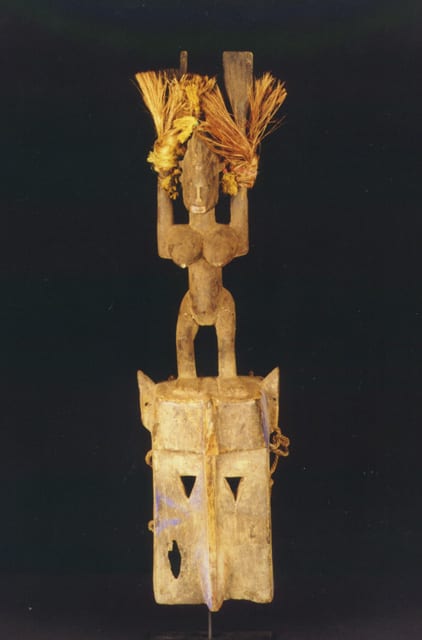African Art / Dogon / Dogon Wooden Satimbe Mask, 19th Century CE - 20th Century CE
Wood, Fibers, Paint
19.7 x 76.2 cm
7 3/4 x 30 in
7 3/4 x 30 in
PF.3288
Inhabiting the barren cliffsides of the Bandiagara escarpment, near the great bend of the Niger River, the Dogon people led lives of physical austerity and spirtual wealth. They often performed...
Inhabiting the barren cliffsides of the Bandiagara escarpment, near the great bend of the Niger River, the Dogon people led lives of physical austerity and spirtual wealth. They often performed religious ceremonies in which arts played a crucial role. Ceremonies known as "rites of passage" mark the major life cycles, such as initiation or celebrations. Used in such rituals, the Dogon art form is always laden with rich symbolism, expressing their beliefs. Figural sculpture is generally elongated and angular, frequently embellished with incised geometric patterning, and red, white, and black pigment are often appled to them. Dogon masks, such as this marvelous wooden mask, are used primarily for funerary rituals, playing a specific role in the sequence of ritual dances. This particular mask is called satimbe, which represents the elder sister of the mask. The mask itself is rectangular in form with triangular eyes and an elongated nose. The ears look almost zoomorphic, placed near top portion of the mask, and traces of blue paint still remain on the surface of the face. Perhaps signifying the elder sister, a voluptuous female figure stands on top of the mask. The accentuation of her breasts, decoration of fiber and earrings, and the hair with colorful beads display her feminine beauty. Mysteriously, she has her arms raised and one finger points upward. Such gesture captures our attention by surprise and we wonder what the gesture signifes. Perhaps the elder sister is pointing at the sky, from which rain falls to nurture the soil. The power and beauty of this mask take us back to the ancient Africa where the mask was revered.
